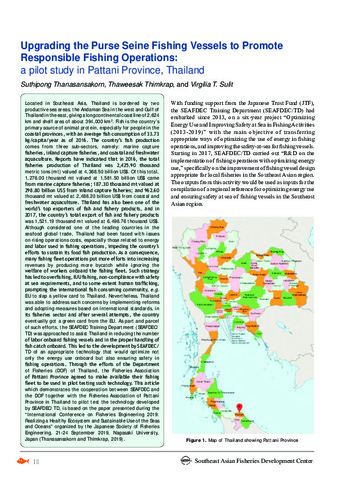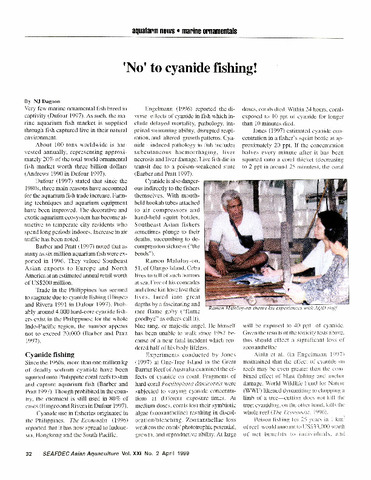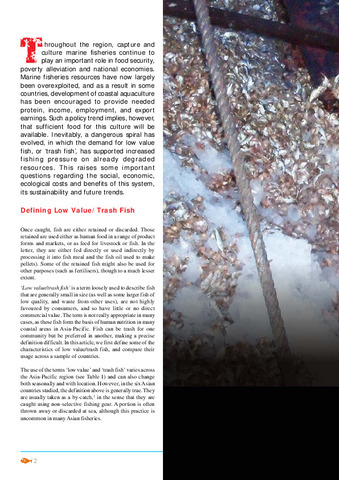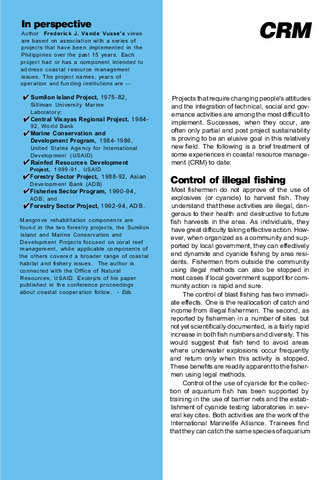Upgrading the purse seine fishing vessels to promote responsible Fishing operations: a pilot study in Pattani Province, Thailand
Share
Abstract
Located in Southeast Asia, Thailand is bordered by two productive sea areas, the Andaman Sea in the west and Gulf of Thailand in the east, giving a long continental coastline of 2,624 km and shelf area of about 394,000 km2. Fish is the country’s primary source of animal protein, especially for people in the coastal provinces, with an average fish consumption of 33.73 kg/capita/year as of 2016. The country’s fish production comes from three sub-sectors, namely: marine capture fisheries, inland capture fisheries, and coastal and freshwater aquaculture. Reports have indicated that in 2016, the total fisheries production of Thailand was 2,425.90 thousand metric tons (mt) valued at 4,368.50 billion US$. Of this total, 1,276.00 thousand mt valued at 1,581.50 billion US$ came from marine capture fisheries; 187.30 thousand mt valued at 298.80 billion US$ from inland capture fisheries; and 962.60 thousand mt valued at 2,488.20 billion US$ from coastal and freshwater aquaculture. Thailand has also been one of the world’s top exporters of fish and fishery products, and in 2017, the country’s total export of fish and fishery products was 1,521.19 thousand mt valued at 6,498.76 thousand US$. Although considered one of the leading countries in the seafood global trade, Thailand had been faced with issues on rising operations costs, especially those related to energy and labor used in fishing operations, impeding the country’s efforts to sustain its food fish production. As a consequence, many fishing fleet operations put more efforts into increasing revenues by producing more bycatch while ignoring the welfare of workers onboard the fishing fleet. Such strategy has led to overfishing, IUU fishing, non-compliance with safety at sea requirements, and to some extent human trafficking, prompting the international fish consuming community, e.g. EU to slap a yellow card to Thailand. Nevertheless, Thailand was able to address such concerns by implementing reforms and adopting measures based on international standards, in its fisheries sector and after several attempts, the country eventually got a green card from the EU. As part and parcel of such efforts, the SEAFDEC Training Department (SEAFDEC/TD) was approached to assist Thailand in reducing the number of labor onboard fishing vessels and in the proper handling of fish catch onboard. This led to the development by SEAFDEC/TD of an appropriate technology that would optimize not only the energy use onboard but also ensuring safety in fishing operations. Through the efforts of the Department of Fisheries (DOF) of Thailand, the Fisheries Association of Pattani Province agreed to make available their fishing fleet to be used in pilot testing such technology. This article which demonstrates the cooperation between SEAFDEC and the DOF together with the Fisheries Association of Pattani Province in Thailand to pilot test the technology developed by SEAFDEC/TD, is based on the paper presented during the “International Conference on Fisheries Engineering 2019: Realizing a Healthy Ecosystem and Sustainable Use of the Seas and Oceans” organized by the Japanese Society of Fisheries Engineering, 21-24 September 2019, Nagasaki University, Japan (Thanasansakorn and Thimkrap, 2019).
Suggested Citation
Thanasansakorn, S., Thimkrap, T., & Sulit, V. T. (2019). Upgrading the purse seine fishing vessels to promote responsible Fishing operations: a pilot study in Pattani Province, Thailand. Fish for the People, (3), 18-22.
Subject
Collections
Related items
Showing items related by title, author, creator and subject.
-
'No' to cyanide fishing!
Dagoon, N. J. (Aquaculture Department, Southeast Asian Fisheries Development Center, 1999) -
Prized commodity: Low value/trash fish from marine fisheries in the Asia-pacific region
Staples, Derek; Funge-Smith, Simon (Secretariat, Southeast Asian Fisheries Development Center, 2005)The use of the terms 'low value' and 'trash fish' varies across the Asia-Pacific region and can also change both seasonally and with location. This article defines low value/trash fish as 'Fish that have a low commercial ... -
CRM in the Philippines: Lessons learned
Southeast Asian Fisheries Development Center, Aquaculture Department (Aquaculture Department, Southeast Asian Fisheries Development Center, 1996)Philippine coastal communities can become capable fishery resource managers and that their management practices can become largely self-sustaining if the project approach focuses on assisting fishermen to learn how to help ...





